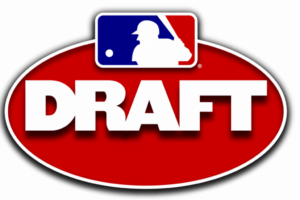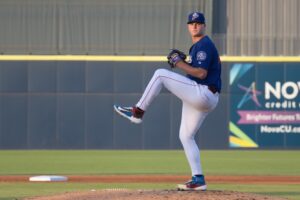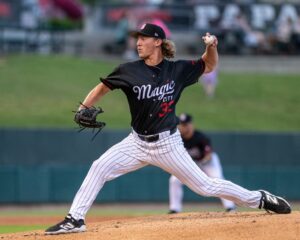Offseason Mail Bag – Answering reader questions
With the end of the World Series and the city’s other team winning their first championship since the fall of the Ottoman Empire, the offseason has officially begun across baseball. So let’s open by answering some questions from you, our readers. The questions were taken from various social media outlets.
- Twitter user @mab8663Panto: “Will Zack Collins stick at catcher?”
We received multiple versions of this same question. As it stands today, Collins has a lot of work to do behind the plate. Reports on some aspects of his game are mixed (arm and pitcher handling), while others are pretty much universally negative (receiving and defensive skills). That’s current state though, and certainly he’s going to be putting work in to improve. The White Sox obviously believe he has some reasonable chance of staying at backstop, or else they wouldn’t have drafted him where they did.
What it comes down to is athleticism – does he have enough to adapt and improve significantly in the next year or two? I’ve spoken with some analysts who believe he can get there, and others that do not. I’d call it 50/50 at the moment. We’ll know a lot more when he’s had a year of full season ball in 2017, and when we get a good in-person look at him once he has a year of pro instruction under his belt.
- Twitter user @Chuck_3559: “How close are the two Zacks (Collins, Burdi) to the majors?”
Following up on the previous answer, Collins’ path to the majors has two possibilities. His bat and plate approach are advanced. If the catching experiment doesn’t go well in 2017, he could potentially move up as a 1B/DH at a quick pace, reaching the majors in 2018 or even late 2017. If on the other hand he’s staying behind the plate, he’ll need multiple years of development, and 2019 is a reasonable target.
The flame-throwing Zack Burdi (here’s our in-person scouting report with video), on the other hand, is much closer to the big leagues. There was even some serious consideration given to him joining the Sox in September of this past season. Unless the club plans to shift him to starting in 2017 (which is unlikely), he’s got a shot at the Opening Day bullpen this coming spring, and a 2017 debut is highly likely.
- Twitter user @JLenti_1: “What level with Hansen start 2017 at? Also Call, Fisher”
Alec Hansen ended his big 2016 campaign at Class A Kannapolis. He could return there, but I’d bet on High-A Winston-Salem. The team sees Hansen as well ahead of the curve, and they have a tendency to send high-end prospects to A+ quickly.
3rd round pick Alex Call also ended with Kannapolis and seemed to have very little trouble with South Atlantic League pitching. Like Hansen, it’s likely he opens 2017 with the Dash, though returning to Kanny is possible. 4th rounder and fellow outfielder Jameson Fisher raked in Great Falls in 2016, though he’s still adjusting to the outfield, where he had virtually never played prior to that season. He should be in the Intimidators’ outfield to open the season.
- Twitter user @sethamilavel: “Have any position players shown improvement in the AFL, like Engel last year?”
No. But some of the pitchers have done well, specifically Louie Lechich, Nolan Sanburn and Brian Clark.
- Twitter user @Ja_kow: “What’s up with Blake Hickman?”
In case people missed the back story, Hickman went down with Tommy John surgery shortly after being drafted in the 7th round in 2015. It was originally thought he’d maybe get into some games late in 2016, but that didn’t materialize.
I checked in with Blake yesterday, and he says he’s on track for Spring Training. He’s been writing some journal posts for us about his recovery, and we hope to post a new one soon. But he should get in a nearly full season in 2017 if all goes well, hopefully including some time in full season ball.
- SoxTalk.com user southsider2k5: “Who will be the next wave of players coming from Latin America into the US parts of the Sox farm system?”
This is sometimes a tough read, because virtually no one outside the organization gets a good look at the talent in the DSL in-person, and stats from that teenager-laden rookie league are close to meaningless. That said, there are hints to look for. For example, players who have seen little or no playing time in the US that are invited to Fall Instructs, are almost always the ones who play stateside the next year. This year that would include infielder Lenyn Sosa, outfielders Josue Guerrero and Luis Mieses, and pitcher Jendersson Caraballo. Those players are likely to be on a rookie league team in 2017, probably the AZL White Sox.
- SoxTalk.com user bmags: “It seems like the term “raw” often applies to our LatAm prospects, even as they hit stateside. I feel like this is a little surprising because at this point those prospects may have had up to 2 years of “professional” ball after signing. Are the programs they go into after signing at age 16 professional or are they no different than a high school/club team schedule?”
This gets at a couple important scouting concepts. First, “age” can be looked at two ways – calendar age and developmental age, with the latter being about the number of years of high level game exposure as opposed to years on earth. In the case of Latin American prospects, it is true they are getting dedicated professional instruction as 16 and 17-year olds as an advantage, but it’s also true that their level of competition may not be as high. As far as calendar age goes, they tend to start stateside as 18- or 19-year olds, so they are raw in a sense similar to domestic prep draft picks.
- SoxTalk.com user Dam8610: “The 2016 draft class had a great deal of early success from several of its members, most notably Zack Burdi, Alec Hansen, Alex Call, Jameson Fisher, and Aaron Schnurbusch. How did the organizational scouting philosophy yield these players? Asked another way, what traits did the organization’s scouts identify that made them attractive as draft picks, and how will they go about identifying those same traits in other draft prospects moving forward?”
With Nick Hostetler taking over the draft and amateur scouting department for the past couple years, there has been a clear shift in philosophy. I will start by telling you to read our in-depth interview with Hostetler. He can tell the story better than we can. As for high level differentiation, those are two power arms, while Fisher and Call are both polished, advanced bats.
- Twitter user @Foster33_70: “What do you see potential-wise for pitcher Matt Foster“
Do we detect a personal interest here?
A 20th round pick this past June, Foster put up a pretty huge debut statistically. As a 21-year old, the Alabama product compiled a 0.64 WHIP, 2.1 BB/9 and 12.4 K/9 in 22 games across both rookie league squads. With Great Falls, he improbably allowed just one hit in is 11.1 innings there. We haven’t been able see him pitch in person yet, but he was throwing a low-to-mid 90’s fastball in college. He’s certainly an arm to track in 2017 with one of the two A-ball clubs.
- Twitter user @ChitownNSession: “Can we find a FULL MLB bullpen from the minors in 2017?”
Left this for last, because it seems like a fun exercise. If we remove all the major league-level arms, what would a 2017 bullpen look like made up purely of current prospects in the system? Here’s my shot at it, with some assumptions made (Carson Fulmer being a starter in 2017, Smith being re-signed):
- CL: Zack Burdi
- SU: Blake Smith
- SU: Brad Goldberg
- MR: Tyler Danish
- MR: Brian Clark (L)
- LOOGY: Will Lamb (L)
- LR: Chris Beck or Terance Marin
There are some major league arms there to be sure, and in fact the majority of them will probably see some time in Chicago in 2017. If Fulmer does go to the pen, it looks better. There is relief talent in the upper minors. But if you actually opened 2017 with that specific bullpen, the results (at least at first) would likely not be pretty.
Want to know right away when we publish a new article? Type your email address in the box on the right-side bar (or at the bottom, if on a mobile device) and click the “create subscription” button. Our list is completely spam free, and you can opt out at any time.






